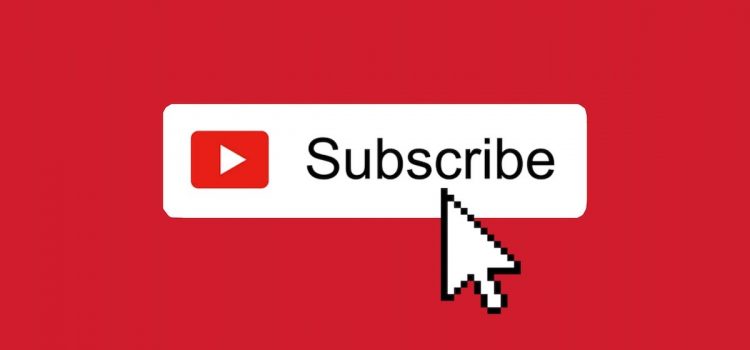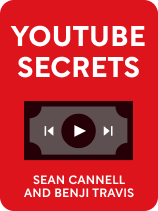

This article is an excerpt from the Shortform book guide to "YouTube Secrets" by Sean Cannell and Benji Travis. Shortform has the world's best summaries and analyses of books you should be reading.
Like this article? Sign up for a free trial here.
How do you build a community of viewers on YouTube? How often should you post videos to your channel? What’s the best way to deal with trolls?
While it’s crucial to create quality content, content by itself is not enough to make your YouTube business successful. Benji Travis and Sean Cannell explain that you also need to build a community of dedicated viewers who are united by their common interest in your content.
Read more to learn how to build a YouTube audience and foster community among your viewers.
How to Build a YouTube Audience
Travis and Cannell’s advice for how to build a YouTube audience depends somewhat on your content. You might build a community from scratch around a topic that wasn’t previously covered on YouTube, or you might gather a following within a unique niche of an existing community.
Either way, as you develop your vision for your channel and come up with ideas for videos, consider not only what types of value you can provide, but also who it’s for. The better you understand your audience, the better you’ll be able to create a sense of friendship with them in your videos.
Particularly if there’s already a community of people united by a common interest in your topic, Travis and Cannell say you should find out who their prominent influencers are—especially what other YouTube channels they already subscribe to. It’s also good to know how many of them there are, what their level of income is, and what kind of things they’re willing to spend money on, as this will help you identify which revenue streams to focus on. (We’ll talk more about revenue in the next section.) Beyond understanding and keeping your target audience in mind when creating content, the authors recommend using several methods to build your community, which we’ll discuss in turn.
| More Reasons to Understand Your Audience and Their Influencers In relation to Blue Ocean Strategy, you need to understand who your users are and what they care about so you can design your product to be uniquely valuable to them. Thus, getting to know your viewers is not only essential for building a sense of community around your channel but also for identifying what content they will find valuable. Kim and Mauborgne recommend familiarizing yourself with all the alternatives that your customers have—especially different products that provide other ways of satisfying the same needs or desires. Sometimes you can create a particularly successful product by combining features or capabilities that your customers normally get from different products into a single, unique offering. When you’re running a YouTube channel, your viewers’ alternatives are the other influencers whom they follow. So studying these influencers can help you determine both what your customers value (based on the commonalities between them) and how you can make your own channel unique (by providing a unique combination of things that they value). For example, maybe your audience watches a lot of gardening how-to videos and also a lot of comedy videos, so you carve out a niche for yourself by making humorous gardening videos. |
Post Regularly
According to Travis and Cannell, one of the most important ways to build your community is to post videos frequently and at regular intervals. This is because the more frequently and consistently your viewers see your face and hear from you by watching your videos, the more they will feel a sense of connection with you.
So, if possible, post at least one video per week. If you can make enough good videos to post two or three a week, that’s even better. If your videos are very short (less than 60 seconds) it may even be worth posting as many as five videos per day. But if you only post one video a month and do so regularly, that‘s still better than only posting videos sporadically.
| Exceptions to Posting Every Week The principle that it’s important for your viewers to see you regularly so they can maintain their sense of community with you makes intuitive sense, but the optimal frequency of posting videos for your channel will vary depending on who your viewers are and what kind of value they find in your videos. Some channels have experienced great success while posting less than one video per month. Generally, these channels post videos about big projects (such as building a complicated robot) or cinematic productions that take months to create. Because of the work that goes into them, these videos deliver value in a unique niche that more frequently posted videos can’t fill. |
Respond to Comments
Perhaps the most obvious way to build a sense of community with your viewers is to encourage two-way discussion in the comments section of your videos. You can stimulate discussion in the comments section by asking your viewers a question in your video or encouraging them to share their thoughts on a certain issue. Travis and Cannell emphasize the importance of responding to all your viewers’ comments, especially when you’re first getting started.
| Dealing With Negative Comments Beware that not all comments are well-intentioned. Sometimes “trolls” will leave comments aimed only at tearing you down or suppressing your message. Travis and Cannell acknowledge this and mention that you need enough courage to accept that “trolls” are a fact of life on YouTube. Some YouTubers deal with trolls by responding to them in ways that deescalate the conflict and even garner extra attention from followers. If you’re being trolled, consider finding a neutral and humorous way to respond to them. Even if you don’t silence the troll, perhaps your other followers will find your repartee clever. |
Engage Your Audience Live
Another way to build a stronger sense of community among your viewers is to engage with them in real time. You can do this within YouTube itself using the live-streaming feature. With live-streaming, your video feed is broadcast in real time, and your viewers have access to a chat window. So you can use it to respond to questions as they are asked, or receive instant, live feedback as you present information or entertainment.
Depending on your audience and where they congregate, you may also be able to engage with them in person by attending conferences or giving live performances in venues that they frequent.
(Shortform note: Travis and Cannell are basically applying one of Dale Carnegie’s principles of likeability to YouTube. In How to Win Friends and Influence People, Carnegie points out that people tend to be interested in themselves above all else. So one of the best ways to make them like you is to show interest in them. Giving your viewers a chance to talk about themselves, ask questions, and interact with you in real time shows that you’re interested in them. Carnegie also says you can build your influence by going out of your way to talk to people who are “beneath” you, like lower-level employees in a company you manage, or, in this case, viewers on YouTube.)
Exercise: Design a Strategy to Reach & Connect Viewers
In this exercise, you’ll have a chance to apply Travis and Cannell’s advice to your own YouTube business.
- Briefly describe your viewers. What are the unique or defining characteristics of your target audience? How might you build your target audience? This might be by posting more regularly or engaging your audience in live-streams.
- Given your answer to the question above, brainstorm a few things you could do to build a sense of community between you and your target audience. For example, is there a convention where they get together (either in person or online) that you could attend or arrange to speak at? Or are there certain key influencers whom you could collaborate with on a project?

———End of Preview———
Like what you just read? Read the rest of the world's best book summary and analysis of Sean Cannell and Benji Travis's "YouTube Secrets" at Shortform.
Here's what you'll find in our full YouTube Secrets summary:
- A guide to developing a successful YouTube business model
- How to produce videos and grow your audience
- How to find and implement the most effective revenue streams






